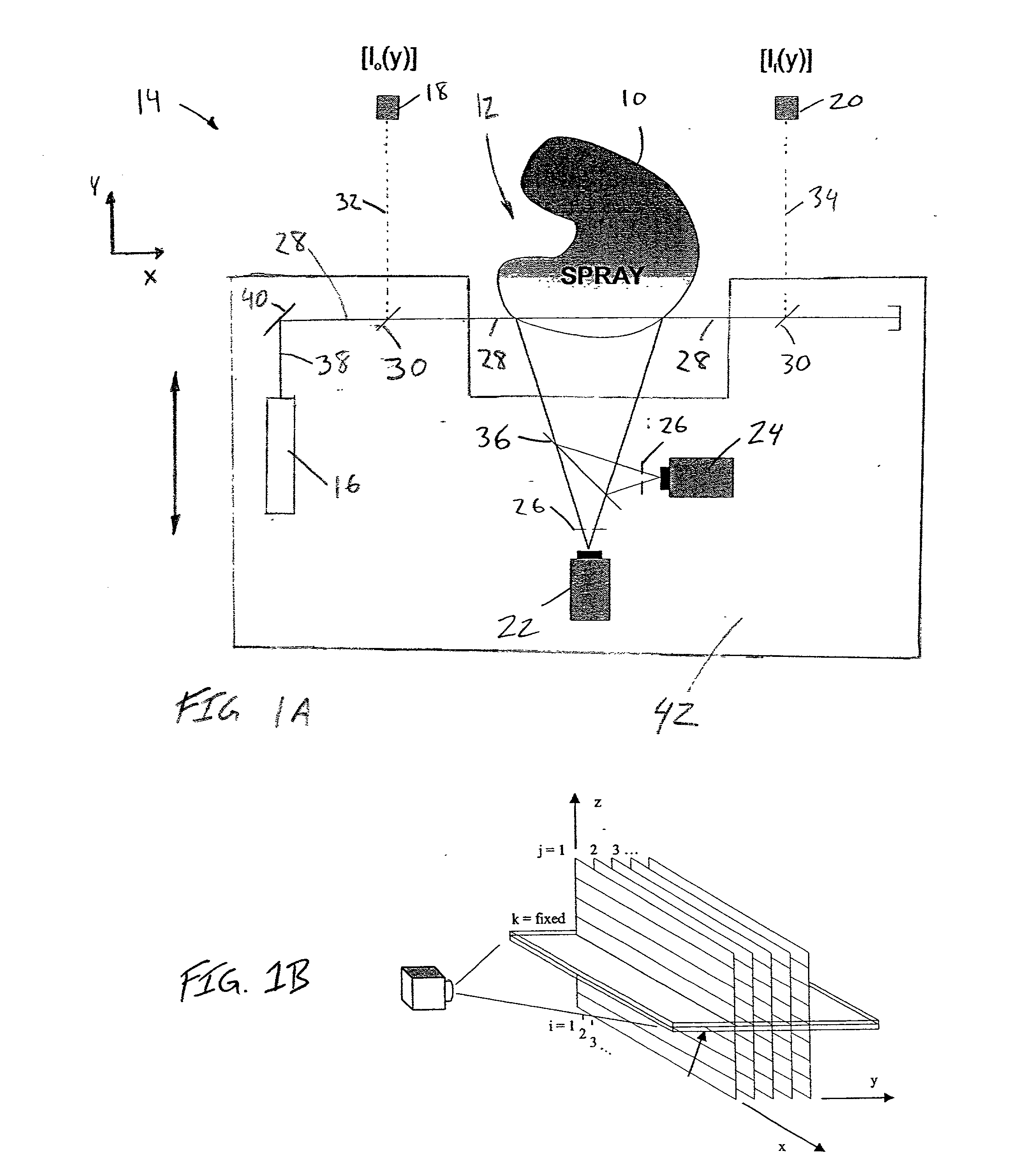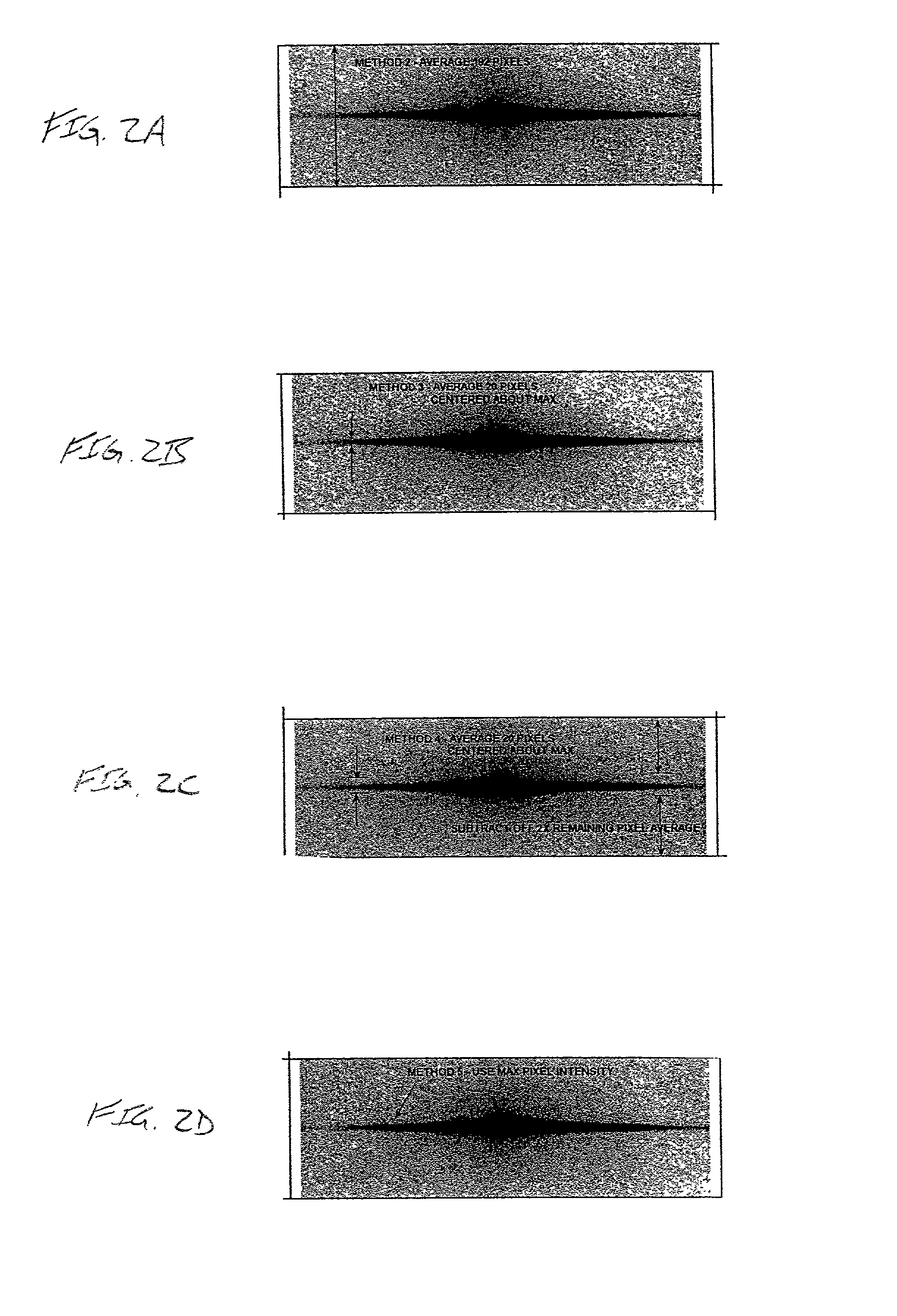Optical patternation method
a patterning and optical technology, applied in the field of optical techniques, can solve the problems of under-representation of the amount of material that is actually present, the amount of exciting laser light can be considerably reduced, and the scattering of light is not uniform,
- Summary
- Abstract
- Description
- Claims
- Application Information
AI Technical Summary
Problems solved by technology
Method used
Image
Examples
Embodiment Construction
[0103] A simplified example demonstrating the application of this method is presented below. An arbitrary three-dimensional field 50 comprising the region 12 containing, for example, a particle field 10, can be represented in a discretized format as shown in FIG. 10. A specific plane of interest 52 cutting through the field 50 is shown. In this case, for convenience, the plane 52 is parallel to the x-y axes.
[0104] A systematic interrogation of this plane of interest 52 can be executed using a beam of light 38 rather than a sheet and by placing the detector 22, 24 in the same plane as the plane of interest as illustrated in FIGS. 11A and 11B.
[0105] The method described above involves a systematic collection of images of both scattered light and fluorescence. The systematic collection comprises obtaining images at various discrete locations moving into the 3D field 50 as depicted in FIGS. 12A-12C where three of five measurement "stations," referred to above as optical paths 28, are sh...
PUM
| Property | Measurement | Unit |
|---|---|---|
| collection angle | aaaaa | aaaaa |
| distance | aaaaa | aaaaa |
| power | aaaaa | aaaaa |
Abstract
Description
Claims
Application Information
 Login to View More
Login to View More - R&D
- Intellectual Property
- Life Sciences
- Materials
- Tech Scout
- Unparalleled Data Quality
- Higher Quality Content
- 60% Fewer Hallucinations
Browse by: Latest US Patents, China's latest patents, Technical Efficacy Thesaurus, Application Domain, Technology Topic, Popular Technical Reports.
© 2025 PatSnap. All rights reserved.Legal|Privacy policy|Modern Slavery Act Transparency Statement|Sitemap|About US| Contact US: help@patsnap.com



